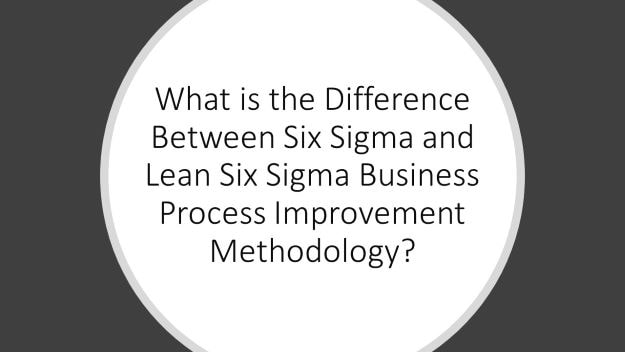This allows for small changes to be made as they recognized, whereas Six Sigma is more of an overall assessment. Six Sigma is typically used for a serious problem that requires much attention to detail in order to come with a quick solution, however Lean Six Sigma is implemented as a long-lasting solution to improve the organization of a company.
Lean Six Sigma requires the whole company to learn and implement the changes, whereas Six Sigma tends to just use teams instead. This is often more desirable for a large company that does not want to train all its employees but it can cause miscommunication, misunderstandings and feelings of separation. Lean Six Sigma requires each individual in a company to learn and develop skills that help the company lower waste and improve productivity.
Smaller companies will have a harder time using Six Sigma than Lean Six Sigma, since it requires much planning, analyzing and training in order to get the desired results. Small companies do not have the manpower to function without key members of the time, whereas larger companies can spare individuals from each department. Though some smaller companies choose to train and develop in increments at a time and put them together in the end, instead of fully engaging in a Six Sigma at one time.
It is necessary to have at least a single employee to undergo Six Sigma or Lean Six Sigma at any time in order to provide training to the other employees. Read more about how Lean Six Sigma methodology can help your organization in my book ‘Revolutionizing Industries with Lean Six Sigma’. You may check it out here. Many companies find it beneficial to hire outside help in order to train staff without disrupting day to day operations.
Related reading:
- Top ten strategic decision-making tools for operational excellence.
- Kaizen for pharmaceutical, medical device and biotech industries.
- Business process improvement techniques for manufacturing and service industries.
- How to choose a business process improvement technique for your organization.
- 30 Popular continuous improvement tools.
- YouTube #Shorts videos on Continuous Improvement.
Follow Shruti on Twitter, YouTube, LinkedIn
Categories: Process Improvement | Lean Six Sigma | Operational Excellence
Keywords and Tags:
#Manufacturing #SixSigma #ProcessExcellence #ContinuousImprovement #QualityImprovement #DMAIC #ManufacturingManagement #BPM #LeanSixSigma





















